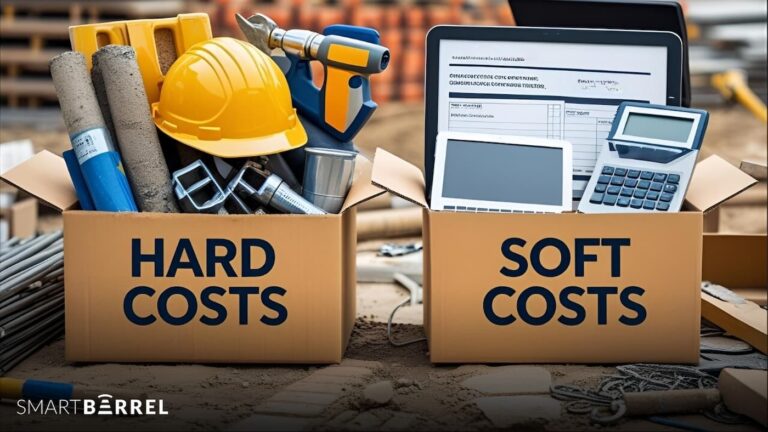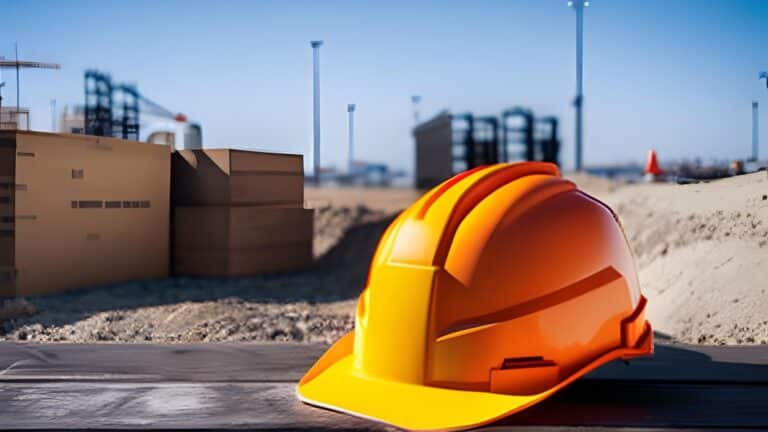Construction cost codes are commonly used on job sites, but if you’re new to the construction industry, you may be wondering what these numerical values mean and how construction sites benefit from using them.
Here’s everything you need to know about cost codes, and how the SmartBarrel device can help you effectively enforce, organize, and manage them.
What are construction cost codes?
Cost codes for construction projects are standardized and numerical values that indicate the type of work being done on a project. For example, ‘09 90 00’ can be used as shorthand to refer to ‘painting and coating’ tasks.
Not only do cost codes allow professionals to separate work into distinct divisions, but they’re also used to categorize and organize expenses. By using cost codes, construction firms can accurately conclude how much certain aspects of a project cost, and whether the costs correspond to what was originally budgeted.
Cost codes are based on the pricing of specific activities on a job site, and are used in budgeting, work documentation, cost tracking, and spend analysis.
Construction Cost Codes Types
To implement construction cost codes, you need to know which types suit your needs the most. The common ones are:
Labor
Labor cost codes cover expenses related to the workforce involved in the project. This includes both direct and indirect costs associated with labor:
- Wages
- Salaries
- Benefits
- Payroll taxes
- Training expenses
It can also include other costs related to personnel management within your company.
Materials
Material cost codes represent expenses incurred for the physical elements used in construction. This includes:
- Raw materials
- Components
- Supplies
Basically, these codes describe any items purchased or fabricated for the current construction project.
Equipment
Equipment cost codes cover the costs associated with the use and maintenance of construction equipment. This includes expenses related to tools and equipment you use on the construction site. For example:
- Purchasing
- Leasing
- Renting
- Operating
- Fueling
- Repairing
- Maintaining
This can range from safety gear purchases to construction crane rentals.
Subcontracts
These cost codes include expenses associated with subcontracted work or services. They can describe payments made to subcontractors for specific tasks, services, or portions of the project outsourced to external vendors.
Administrative/Overhead
Administrative or overhead cost codes refer to various indirect costs incurred during project execution. This includes administrative expenses such as legal fees, insurance premiums, office rent, utilities, office supplies, and others.
What are the benefits of using construction cost codes?
A cost coding system in construction is a reliable, fast, and easy way to account for labor and material expenses. Here are the main benefits of implementing and using cost codes.
Standardization of data creates clarity
Standardized coding ensures that everyone knows exactly what’s being accounted for, eliminating ambiguity by communicating specificity.
For example, if a worker wants to determine the total cost of tiling materials for a project, simply inputting ‘flooring’ creates confusion for other workers and can prevent management software from properly categorizing expenses.
It creates more work and trouble to ask: what kind of flooring is being accounted for? Carpet, wood flooring, or tiling? Does this cover the labor involved with getting the tiling work done, or only the cost of materials? Using a specific cost code, 09 30 13 for the cost of ceramic tiling, eliminates this confusion and lets you track expenses more precisely.
With project finances organized into manageable, distinct categories, cost tracking is more accurate and accounting becomes much easier.
Improved resource and job costing management
Cost codes for construction projects are also useful for managing a project’s resources, letting you weigh material and job costs against outcomes for better management decision-making.
By using cost codes to categorize expenses, you can track what your project’s budget is being used for and determine whether the resources you’re paying for are worth the price. From there, you can fine-tune, adjust, and optimize your project’s budget by increasing investment in some areas and eliminating unnecessary expenses in others.
Companies can use cost codes to determine whether it’s financially viable to subcontract a portion of their projects and hire professionals better equipped to complete specialized tasks.
What does a construction cost codes list usually include?
Firms typically use construction cost codes lists sourced from the Construction Specifications Institute (CSI), an association of experts dedicated to improving communication across construction projects.
With the growing complexity of construction projects and the wider range of labor and materials involved, the CSI would recognize a need for construction coding specifications to ensure that all parties and stakeholders understand relevant costs.
To this day, many companies reference the CSI’s MasterFormat manual, but it’s also not uncommon for construction firms to have their own list of cost codes, especially for projects with more unique requirements. These cost code lists are usually company-specific rather than differing from project to project.
Regardless, here’s what you’ll typically find in construction cost codes lists. There are gaps between some divisions since the CSI continuously expands the list.
- Division 00: Procurement and contracting requirements
- Division 01: General requirements
- Division 02: Existing conditions for site construction
- Division 03: Concrete
- Division 04: Masonry
- Division 05: Metals
- Division 06: Woods, plastics, and composites
- Division 07: Thermal and moisture protection
- Division 08: Openings (doors and windows)
- Division 09: Finishes
- Division 10: Specialties
- Division 11: Equipment
- Division 12: Furnishings
- Division 13: Special construction
- Division 14: Conveying systems and equipment
- Division 21: Fire suppression
- Division 22: Plumbing
- Division 23: Heating, ventilating, and air conditioning (HVAC)
- Division 25: Integrated automation
- Division 26: Electrical
- Division 27: Communications
- Division 28: Electronic safety and security
- Division 31: Earthwork
- Division 32: Exterior improvements
- Division 33: Utilities
- Division 34: Transportation
- Division 35: Waterways and marine construction
- Division 40: Process integration
- Division 41: Material processing and equipment-handling
- Division 42: Process heating, cooling, and drying equipment
- Division 43: Process gas and liquid handling, purification, and storage equipment
- Division 44: Pollution and waste control equipment
- Division 45: Industry-specific manufacturing equipment
- Division 46: Water and wastewater management
- Division 48: Electrical power generation
How to Create Your Own Construction Cost Codes List
Creating your own construction code structure can be complicated but highly useful. These steps can take you closer to streamlining your construction project management and financing.
Define Objectives
To make work more productive, you need to define the purpose and scope of the list. It has to address all the relevant aspects of your projects in detail. To make things easier, identify the key areas you need to cover. Go back to the old projects to check which categories are the most relevant.
Consider consulting with the stakeholders to get ideas of what parameters may be important for the upcoming projects.
Research Existing Codes
Existing construction cost codes can give you a better understanding of how to go about making your own list. Speak to your accounting department to find out which codes work best for them. You may need to take existing codes and add new elements to cater to your company’s needs.
Keep in mind that you can always adjust the list according to the growing requirements. To make things easier, leave room for future adjustments from the beginning.
Organize Codes
Categorize the construction codes into logical sections to make the list easy to navigate. Group-related codes under headings such as:
- Labor
- Materials
- Equipment
- Subcontractors
- Overhead
Consider using a hierarchical structure to arrange codes from general to specific. Also, assign unique identifiers to each entry for easy reference. You need to maintain consistency in formatting throughout the list.
Implement Cost Codes
Once the code list is ready, you need to share it with all the team members who are involved in the process.
Make sure everyone understands how to use the codes. Even if you used standard construction cost codes before, this may require arranging short training sessions.
Incorporate the codes into your project management software for easy accessibility.
Monitor and Update
Once you implement the construction cost code list, you need to review it regularly. Here are some tips:
- Track changes in material costs, labor rates, and industry standards.
- Schedule periodic audits to ensure all cost codes reflect current market conditions
- Collect feedback from team members on the usability and accuracy of the codes
- Promptly update the list to incorporate new information and improvements
Every time you make changes, make sure to document them for transparency.
How many construction cost codes does a company need?
Although there is a standard list of construction cost codes, including all of them for every project is unnecessary. In fact, a common mistake that companies make is incorporating too many cost codes into their projects, which adds no value, creates more work for accounting, and makes reconciling costs more of a headache than it needs to be.
A good rule of thumb is to include the most essential cost codes. Consider, also, who is meant to benefit the most from referencing these codes. Different stakeholders will require different levels of information, so it’s important to provide just enough detail for informed decision-making.
Of course, for projects that require more specificity, technology can go a long way in helping you manage cost codes.
Manage cost codes for construction projects with SmartBarrel
Although cost codes for construction projects are incredibly useful, memorizing multiple strings of numbers isn’t exactly ideal, especially when working in fast-paced environments.
The SmartBarrel device helps contractors instantly access cost codes from anywhere, ensuring that the right codes are assigned. Our solution automates tasks to save admin time so you can focus on what’s important.
You can easily split cost codes across multiple shifts and accurately track construction phases, tagging shifts with as many variables as you want. Monitor floors and wages to be paid, all at your fingertips.
Worried about dealing with too many new technologies on the job site? No problem! The SmartBarrel device is intuitive and easy-to-use, and conveniently integrates with Procore and other ERP software so you can upload, track, and manage cost codes at the touch of a button.
SmartBarrel makes management easy—request a demo today!






